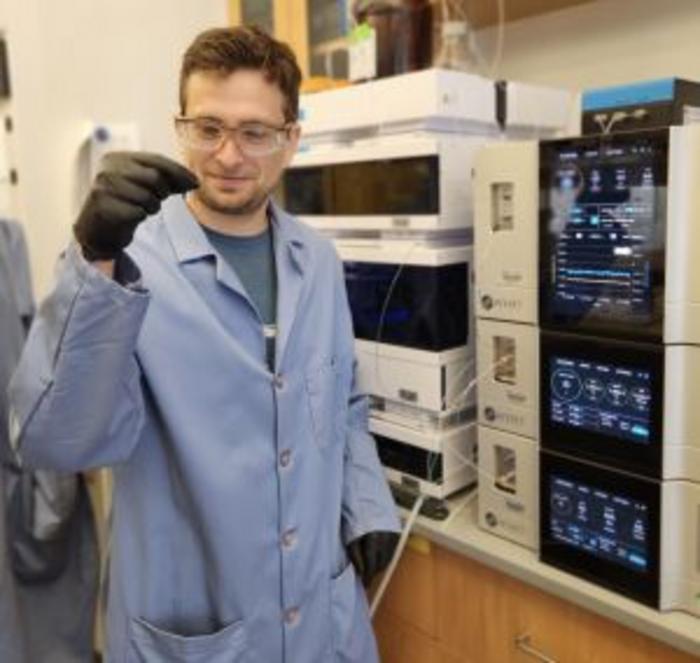Every year, a staggering number of tires contribute to the landfill crisis, creating a significant environmental challenge across the globe. In the United States, over 274 million tires were disposed of in 2021, with approximately 20% ending up buried in landfills. The implications of this disposal are profound, sparking concerns about not only the physical space these tires occupy but also the environmental hazards they introduce. These hazards include toxic chemical leaching, which can contaminate groundwater, and the potential for spontaneous combustion, which can release harmful pollutants into the air. While current methods like pyrolysis—aimed at recycling rubber through high-temperature processes—have been frequently employed, they are not without drawbacks. Pyrolysis generates hazardous byproducts, including chemicals such as benzene and dioxins, presenting risks to both human health and the environment.
A transformative study funded by the U.S. Department of Energy, entitled “Deconstruction of Rubber via C–H Amination and Aza-Cope Rearrangement,” is making waves in the field of sustainable chemistry. Led by Dr. Aleksandr Zhukhovitskiy, a William R. Kenan, Jr. Fellow and Assistant Professor in the Department of Chemistry at the University of North Carolina at Chapel Hill, this research introduces a groundbreaking chemical methodology for addressing rubber waste. The newly developed technique leverages C–H amination along with a polymer rearrangement strategy to convert discarded rubber into valuable precursors used for the synthesis of epoxy resins. This innovative approach presents a sustainable solution to the long-standing issue of rubber disposal, opening up avenues for recycling that traditional methods have not successfully managed.
Rubber, notably the synthetic variety prevalent in tires, is a complex polymer composed of extensive cross-linked networks that bestow upon it remarkable durability and flexibility. This remarkable structure, while advantageous for performance, significantly impedes the breakdown and recycling processes. Current recycling methods primarily focus on de-vulcanization, which involves breaking the sulfur cross-links—an action that weakens the rubber’s mechanical integrity. Alternatively, oxidative or catalytic cleavage methods target the polymer backbones. However, these approaches often yield complex and low-value byproducts, resulting in inefficiencies. Such limitations underscore the necessity for more effective and scalable solutions to recycle rubber waste sustainably.
In contrasting conventional approaches, Dr. Zhukhovitskiy and his team have crafted a method that effectively deconstructs rubber into functional materials that retain value, even in a mixed state. This innovation marks a significant advance in the recycling domain, allowing the derived materials to find utility in high-value applications. To achieve this, the researchers have incorporated a sulfur diimide reagent that promotes the installation of amine groups in specific segments of the polymer chains. This crucial step lays the groundwork for subsequent rearrangement of the polymer backbone.
The unique rearrangement inherently alters the structure of the rubber, resulting in soluble amine-functionalized materials that can be integrated into the manufacturing processes for epoxy resins. During experiments with a model polymer, the team successfully decreased its molecular weight from 58,100 g/mol to an innovative 400 g/mol. When applied to actual used rubber, this method proved equally effective, fully breaking down the material within a mere six hours, transforming it into a soluble form enhanced with amine groups, ideal for further utilization in producing versatile epoxy resins.
The efficiency of this two-step method puzzles when juxtaposed against traditional recycling techniques, which often depend on extreme temperatures or costly catalysts. In highlighting its environmental advantages, the researchers achieved groundbreaking results under mild conditions ranging from 35-50°C, or 95-122°F, all within an aqueous medium. Such conditions enhance not only the process’s efficiency but also its eco-friendliness and cost-effectiveness.
The applications of the resulting epoxy resins extend across various industries, recognized for their significance in adhesives, coatings, and composite materials. Traditionally derived from petroleum-based chemicals such as bisphenol A and varied curing agents, this research offers an alternative by introducing amine-modified poly-dienes which can produce epoxy materials exhibiting strength comparable to conventional commercial resins on the market.
Maxim Ratushnyy, a co-author of the study and a former postdoctoral scholar at UNC-Chapel Hill, reflects on the blessings of organic synthesis in light of these findings. He expressed amazement at how seamlessly the developed sequence of transformations could break the formidable C—C bonds, converting polybutadiene and polyisoprene-based rubbers into materials with potential economic and functional viability.
Beyond the implications of practical applications, this research signifies a pivotal shift towards more sustainable recycling methods. The team scrutinized the environmental repercussions of their method utilizing the Environmental Impact Factor (E-factor), which calculates the waste generated relative to product yield. This assessment is integral in evaluating new processes against existing ones while pinpointing steps where sustainability can be enhanced as the team aspires to transition their findings from laboratory settings to practical uses.
Although the comprehensive E-factor, incorporating solvent use, registered as high, the simpler E-factor, which excluded solvents, yielded a promisingly low score. This distinction highlights potential areas for further optimization to maximize sustainability. The research team remains proactively engaged in investigating greener solvent systems and alternative reaction conditions to further mitigate waste production.
This remarkable study reflects a transformative paradigm shift within the realm of rubber waste management. Sydney Towell, a co-author and Ph.D. candidate at UNC-Chapel Hill, encapsulated this sentiment, asserting that by harnessing the innovative power of C–H amination combined with polymer backbone rearrangement, the method secures a novel route for converting post-consumer rubber into high-value materials that can markedly reduce landfill dependence while minimizing the environmental ramifications associated with rubber waste.
The breakthrough could potentially usher in a new era of eco-friendly recycling technologies, offering hope and direction for addressing a critical environmental crisis that poses challenges to sustainability. As the world grapples with the consequences of landfill overuse and tire waste, this research provides an inspiring glimpse into the future of recycling practices that prioritize sustainability and innovative chemistry.
Subject of Research: Breaking down rubber waste using innovative chemical methods
Article Title: Deconstruction of rubber via C–H amination and aza-Cope rearrangement
News Publication Date: 26-Mar-2025
Web References: Nature
References: DOI: 10.1038/s41586-025-08716-6
Image Credits: Credit: UNC-Chapel Hill Department of Chemistry
Keywords
Organic chemistry, Pollution, Pollution control, Polymer chemistry




